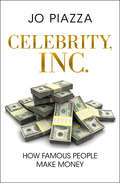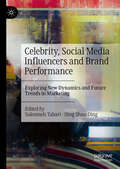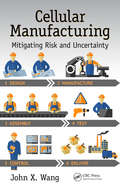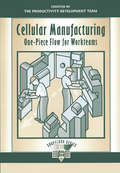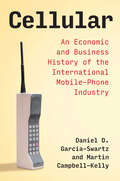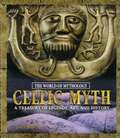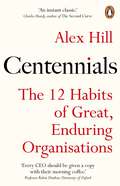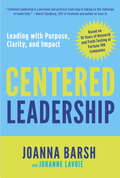- Table View
- List View
Celebrity Fashions: Moving Ahead (B)
by V. G. Narayanan Shreya Ramachandran Tanvi DeshpandeIn May 2017 in Chennai, India, the chairman of Celebrity Fashions doubted whether the company could last until the end of the year. Venkatesh Rajagopal had found that the company, a readymade garment manufacturing and exporter he founded in 1989, was hitting hard times financially. It had been dealing with declining revenues for the past five years, and its losses had tripled between 2014-16. A slowdown in factory plant processes in 2006 and the value of the rupee against the dollar, as well as wage arrears, contributed to the financial problem. Rajagopal's son, Vidyuth, had recently joined the company after moving roles both within Celebrity and its sister company, Indian Terrain, and at organizations elsewhere. In 2017, as joint managing director, he was convinced he would be able to turn the company around. Vidyuth, along with the independent director Venky appointed, identified the problems. There were communication gaps on the factory floor, and this caused lags in the shipments of garments and pushed up costs of production. The financial problems had confused some employees, and others were not aware of it at all. The leadership team was not communicating effectively. Would Celebrity be able to cut operational costs, and would Vidyuth be able to get the buy-in from his team to transform the company, and protect his family business?
Celebrity Humanitarianism and North-South Relations: Politics, place and power (Rethinking Development)
by Lisa Ann RicheyDiscussion over celebrity engagement is often limited to theoretical critique or normative name-calling, without much grounded research into what it is that celebrities are doing, the same or differently throughout the world. Crucially, little attention has been paid to the Global South, either as a place where celebrities intervene into existing politics and social processes, or as the generator of Southern celebrities engaged in ‘do-gooding’. This book examines what the diverse roster of celebrity humanitarians are actually doing in and across North and South contexts. Celebrity humanitarianism is an effective lens for viewing the multiple and diverse relationships that constitute the links between North and South. New empirical findings on celebrity humanitarianism on the ground in Thailand, Malawi, Bangladesh, South Africa, China, Haiti, Congo, US, Denmark and Australia illustrate the impact of celebrity humanitarianism in the Global South and celebritization, participation and democratization in the donor North. By investigating one of the most mediatized and distant representations of humanitarianism (the celebrity intervention) from a perspective of contextualization, the book underscores the importance of context in international development. <P><P>This book will be of interest to students and researchers in the fields of development studies, celebrity studies, anthropology, political science, geography, and related disciplines. It is also of great relevance to development practitioners, humanitarian NGOs, and professionals in business (CSR, fair trade) who work in the increasingly celebritized field.
Celebrity, Convergence and Transformation (ISSN)
by Finola Kerrigan Douglas Brownlied Paul HewerBringing together the latest thinking on both celebrity brands and celebrity culture from academics specialising in the field of marketing, this book explores a range of insightful contexts in order to add vigour and vitality to our understanding of the connections between celebrities, markets and culture. It unpacks the identity theoretics which have their origins in the turn to celebrity culture and the spectacle and glamour of mass-media practices. In doing so, the contributors hint at new forms of individuation where the line between the virtual and the actual is blurred, and where images of celebrities construct and deconstruct themselves. This book was originally published as a special issue of the Journal of Marketing Management.
Celebrity, Inc.: How Famous People Make Money
by Jo PiazzaFrom $10,000 tweets to making money in the afterlife, a recovering gossip columnist explores the business lessons that power the Hollywood Industrial Complex Why do celebrities get paid so much more than regular people to do a job that seems to afford them the same amount of leisure time as most retirees? What do Bush-era economics have to do with the rise of Kim Kardashian? How do the laws of supply and demand explain why the stars of Teen Mom are on the cover of Us Weekly? And how was the sale of Brad Pitt and Angelina Jolie&’s baby pictures a little like a street drug deal? After a decade spent toiling as an entertainment journalist and gossip columnist, Jo Piazza asks the hard questions about the business behind celebrity. Make no mistake: Celebrity is an industry. Never in the course of human history has the market for celebrities been as saturated as it is today. Nearly every day most Americans will consume something a celebrity is selling—a fragrance, a sneaker, a song, a movie, a show, a tweet, or a photo in a magazine. With the benefits of Piazza&’s unique access to the celebrity market, Celebrity, Inc. explains in detail what generates cash for the industry and what drains value faster than a starlet downs champagne—in twelve fascinating case studies that tackle celebrities the way industry analysts would dissect any consumer brand.
Celebrity, Social Media Influencers and Brand Performance: Exploring New Dynamics and Future Trends in Marketing
by Saloomeh Tabari Qing Shan DingCelebrity endorsement has shown to be an effective way enhancing brand-related attitudes, reinforcing behavioural intentions, and shaping brand perceptions. Indeed, companies devote a lot of resources on celebrity endorsement to exploit emotional bonds between consumers and brands in order to accomplish their desired brand image and increase brand awareness, differentiation, and brand loyalty. In short, brands that are endorsed by a favourite celebrity and influencer become more credible and trustworthy. This edited book examines this new era of marketing by focusing on the impact of employing celebrities, SMIs and virtual influencers to endorse the brand as a key advertising tactic. In particular, it focuses on the rise of social media usage and the corresponding changes in advertising strategies in the digital era. As well as exploring this rise of celebrity influencers and their value, the book also takes a critical lens, examining their roles in fuelling the growth of materialism, causing mental health issues among adolescents, and aiding the development of fast fashion. With this balanced and comprehensive approach, this book is an essential resource for anyone interested in the future of advertising.
Celeritas, Inc.: Leadership Challenges in a Fast-Growth Industry
by Michael Beer Ingrid VargasIn 2011, Celeritas is a leading data communications company in the crowded, highly competitive, and ever-evolving enterprise-network optimization market. Having experienced rapid growth since its founding in 2003, Celeritas has recently seen sales decline and has begun to lose market share along with its status as the top player. The CEO, concerned about several problems that may have contributed to this decline, engages an organizational development consultant who leads the firm's senior vice presidents through a two-day offsite exercise in team building. A followup meeting with a lower level of management raises questions about the effectiveness of those efforts.
Celeritas, Inc.: Leadership Challenges in a Fast-Growth Industry
by Michael Beer Ingrid VargasIn 2011, Celeritas is a leading data communications company in the crowded, highly competitive, and ever-evolving enterprise-network optimization market. Having experienced rapid growth since its founding in 2003, Celeritas has recently seen sales decline and has begun to lose market share along with its status as the top player. The CEO, concerned about several problems that may have contributed to this decline, engages an organizational development consultant who leads the firm's senior vice presidents through a two-day offsite exercise in team building. A followup meeting with a lower level of management raises questions about the effectiveness of those efforts.
Celgene: Business Development and Distributed Research
by Peter Barrett Kareem RedaThis case looks at the deal-making process between Celgene, a large publicly traded pharmaceutical company, and Agios, an early-stage biotech company. The framework of a potential deal is explored and the potential road-blocks to Agios' profitability are discussed. The relationship between a fledgling biotech company and an established pharmaceutical company as well as the expectations from both sides regarding their deal are examined.
Cell Formation in Industrial Engineering: Theory, Algorithms and Experiments (Springer Optimization and Its Applications #79)
by Panos M. Pardalos Boris Goldengorin Dmitry KrushinskyThis book focuses on a development of optimal, flexible, and efficient models and algorithms for cell formation in group technology. Its main aim is to provide a reliable tool that can be used by managers and engineers to design manufacturing cells based on their own preferences and constraints imposed by a particular manufacturing system. This tool could potentially lower production costs by minimizing other costs in a number of areas, thereby increasing profit in a manufacturing system. In the volume, the cell formation problem is considered in a systematic and formalized way, and several models are proposed, both heuristic and exact. The models are based on general clustering problems, and are flexible enough to allow for various objectives and constraints. The authors also provide results of numerical experiments involving both artificial data from academic papers in the field and real manufacturing data to certify the appropriateness of the models proposed. The book was intended to suit the broadest possible audience, and thus all algorithmic details are given in a detailed description with multiple numerical examples and informal explanations are provided for the theoretical results. In addition to managers and industrial engineers, this book is intended for academic researchers and students. It will also be attractive to many theoreticians, since it addresses many open problems in computer science and bioinformatics.
Cell Therapy: cGMP Facilities and Manufacturing
by Adrian P. GeeThis new edition presents a fully-updated and expanded look at current Good Manufacturing Practice (cGMP) for cell therapy products. It provides a complete discussion of facility design and operation including details specific to cord blood banking, cell processing, vector production and qualification of a new facility. Several chapters cover facility infrastructure including cleaning and maintenance, vendor qualification, writing a Standard Operating Procedure, staff training, and process validation. The detailed and invaluable product information covers topics like labelling, release and administration, transportation and shipment, et al. Further chapters cover relevant topics like writing and maintaining investigational new drug applications, support opportunities in North America and the European Union, commercial cell processing and quality testing services, and financial considerations for academic GMP facilities. A chapter on future directions rounds out Cell Therapy: cGMP Facilities and Manufacturing making it essential reading for any cell therapy professional involved in the development, use, or management of this type of facility.
Cellular Manufacturing: Mitigating Risk and Uncertainty (Systems Innovation Book Series)
by John X. WangIn today's business world, competitiveness defines the industrial leading edge. Organizations and businesses of all sizes are adopting Lean manufacturing practices to increase efficiency and address worries about their bottom lines. In a detailed review of this staple of Lean manufacturing, Cellular Manufacturing: Mitigating Risk and Uncertainty ou
Cellular Manufacturing: One-Piece Flow for Workteams
by ProductivityDevelopmentTeamCellular Manufacturing: One-Piece Flow for Workteams introduces production teams to basic cellular manufacturing and teamwork concepts and orients them for participating in the design of a new production cell. Use this book to get everyone on board to reduce lead time, work-in-process inventory, and other profit-draining wastes. Each chapter includes an overview and a summary to reinforce concepts, as well as reflection questions, which can be used to encourage group discussions. This volume is part of Productivity Press’ Shopfloor Series, which offers a simple, cost-effective approach for building basic knowledge about key manufacturing improvement topics
Cellular: An Economic and Business History of the International Mobile-Phone Industry (History of Computing)
by Martin Campbell-Kelly Daniel D. Garcia-SwartzTracks the evolution of the international cellular industry from the late 1970s to the present.The development of the mobile-phone industry into what we know today required remarkable cooperation between companies, governments, and industrial sectors. Companies developing cellular infrastructure, cellular devices, cellular network services, and eventually software and mobile semiconductors had to cooperate, not simply compete, with each other. In this global history of the mobile-phone industry, Daniel D. Garcia-Swartz and Martin Campbell-Kelly examine its development in the United States, Europe, Japan, and several emerging economies, including China and India. They present the evolution of mobile phones from the perspective of vendors of telephone equipment and network operators, users whose lives have been transformed by mobile phones, and governments that have fostered specific mobile-phone standards. Cellular covers the technical aspects of the cellphone, as well as its social and political impact. Beginning with the 1980s, the authors trace the development of closed (proprietary) and open (available to all) cellular standards, the impact of network effects as cellular adoption increased, major technological changes affecting mobile phone hardware, and the role of national governments in shaping the industry. The authors also consider the changing roles that cellular phones have played in the everyday lives of people around the world and the implications 5G technology may have for the future. Finally, they offer statistics on how quickly the cellular industry grew in different regions of the world and how firms competed in those various markets. Cellular is published in the History of Computing Series. This distinguished series has played a major role in defining scholarship in the history of computing. Hallmarks of the series are its technical detail and interpretation of primary source materials.
Celtel International B.V.
by G. Felda Hardymon Ann LeamonMo Ibrahim, chairman of Celtel International, the largest provider of cellular services in sub-Saharan Africa, must decide on his company's future. After an amazing six years that took it from minority positions in three countries to nearly $1 billion in revenues and 14 operations in 13 countries, the company has three options: to attempt an IPO, to find a merger partner, or to continue as an independent entity. Ibrahim must consider the company's track record, its current situation, and the implications of each option.
Celtel International B.V.: June 2004 (A)
by G. Felda Hardymon Ann LeamonDepicts the options facing Mohammed Ibrahim, founder and chairman of Celtel International, the largest pan African wireless telecommunications provider, as he tries to position his company for further growth. Should the firm, which has reached $1 billion in revenues in six years, strive for an IPO, trade a sale, or continue as an independent for a few more years? Outlines the company's success and challenges thus far, the benefits and disadvantages of each option, and future funding possibilities.
Celtel International B.V.: June 2004 (B)
by G. Felda Hardymon Ann LeamonSupplements the (A) case. A rewritten version of an earlier case.
Celtic Myth: A Treasury of Legends, Art, and History
by James HarpurCeltic Myth: A Treasury of Legends, Art, and History
Celtic Myth: A Treasury of Legends, Art, and History (The\world Of Mythology Ser.)
by James HarpurThis volume covers the theoretical method, macroeconomics, microeconomics, international trade and finance, development, and policy of economic theory. It incorporates various alternative approaches as well as a broad spectrum of policy issues.
Cementownia Odra (A)
by George Wu Arnold HolleThe Polish government is privatizing Cementownia Odra, a cement firm. Tomasz Budziak, a team leader, is negotiating on behalf of the Polish Ministry of Privatization. Hans-Hugo Miebach, owner of a German cement company, has made an attractive offer; a deal hinges on several issues concerning potential liabilities, a Polish tax credit, land acquisition, and the import of refuse-derived fuel. The case is designed as a simulation in which students actually negotiate, either as Budziak or Miebach, and the need to make contingent arrangements arises naturally. For both Budziak and Miebach, there is uncertainty, sometimes quite substantial, about the extent of liabilities, the likelihood of a tax credit, and the possibility of acquiring requisite quarry land. Provides general information on the Odra negotiation.
Censorship, Inc.: The Corporate Threat to Free Speech in the United States
by Lawrence SoleyThe First Amendment of the U.S. Constitution is a landmark in the defense of free speech against government interference and suppression. In this book we come to see how it also acts as a smokescreen behind which a more dangerous and insidious threat to free speech can operate. Soley shows how as corporate power has grown and come to influence the issues on which ordinary Americans should be able to speak out, so new strategies have developed to restrict free speech on issues in which corporations and property-owners have an interest. Censorship, Inc. is a comprehensive examination of the vast array of corporate practices which restrict free speech in the United States today in fields as diverse as advertsing and the media, the workplace, community life, and the environment. Soley also shows how these threats to free speech have been resisted by activism, legal argument, and through legislation. Grounded in extensive research into actual cases, this book is at the same time a challenge to conventional thinking about the nature of censorship and free speech.
Centennials: The 12 Habits of Great, Enduring Organisations
by Professor Professor Alex HillStart-ups rarely survive their second birthday. Even established firms in the UK and the US average a life of only fifteen years. So how can your company build and sustain success for decades to come?Professor Alex Hill has conducted thirteen years of groundbreaking research into a clutch of organisations that have outperformed their peers for over 100 years - from NASA to the New Zealand All Blacks, from Eton College and the Royal College of Art to the Royal Marines and the Royal Shakespeare Company. And what he has found is that these very different organisations all share remarkably similar strategies when it comes to building and maintaining excellence and success - strategies that frequently fly in the face of conventional business wisdom.Here Professor Hill shares the twelve traits that have set these organisations apart for over a century, from the way they analyse success and failure to their approach to finding the best people and the brightest new ideas. In so doing, he identifies the strategies and habits that you can employ in your company to create a strong and stable core and to ensure the same long-term prosperity. In short, he shows you how to build a promising enterprise into an enduring, great organisation._____________________________________________'An instant classic.' Charles Handy, author of 'The Empty Raincoat' and 'The Second Curve''Every CEO should be given a copy with their morning coffee.' Robin Dunbar, Professor of Evolutionary Psychology at the University of Oxford'If you want to learn what it takes to achieve truly sustainable success in an organisation, then this is a book for you.' Shaun Fitzgerald, OBE, Director of the Centre for Climate Repair at the University of Cambridge
Centerbridge Partners and Great Wolf Resorts (B)
by Josh Lerner Amram Migdal John DionneThe case examines the aftermath of the March 2015 Centerbridge Partners acquisition of Great Wolf Resorts, a North American family-oriented indoor water parks and hotel operator, from a private equity (PE) competitor, Apollo Global Management.
Centerbridge Partners and Great Wolf Resorts: Buying from a Highly Regarded Competitor
by Josh Lerner Amram Migdal John DionneThe case examines the March 2015 Centerbridge Partners investment decision regarding whether to acquire Great Wolf Resorts, a North American family-oriented indoor water parks and hotel operator, from a private equity (PE) competitor, Apollo Global Management. The case allows for discussion of strategic and financing considerations by Centerbridge, a New York-based investment firm employing a flexible approach across investment disciplines: private equity (PE); credit, distressed strategies, and special situations; and real estate. Students are presented the opportunity to perform valuation analysis and compare two possible forms of financing for the potential acquisition: 1) traditional corporate debt and bond financing and 2) commercial mortgage-backed security (CMBS) financing. Strategically, the case poses the questions: Was Centerbridge valuing Great Wolf correctly? Would CMBS be the optimal financing structure, and why had no other firm contemplated this type of financing? Would the company, in partnership with Centerbridge, be able to execute on operational improvements and growth strategy? Was the purchase price multiple of 9.4x warranted in light of the opportunity set? Would an established PE firm like Apollo ever leave enough on the table for a successor private-equity owner to generate gains without necessary multiple expansion?
Centered Leadership
by Joanna Barsh Johanne LavoieWhat enables some talented people to rise to the top and live their full ambitions at work and in life, while others stop short? In 2007, Joanna Barsh led a team at McKinsey & Company to answer that very question. In the process, they uncovered what distinguishes leaders who are successful from those who achieve true greatness, developing an approach called Centered Leadership. They drew on research from across the academic fields of leadership, organization behavior, neuroscience, evolutionary psychology and positive psychology. In addition, Barsh interviewed over 160 leaders from many fields - including business, government and the arts - and from many countries. With quantitative research, the team learned that these leaders have mastered practices to find their balance in the midst of chaos and lead from their most resourceful selves, unleashing the potential of others. In 2009, Johanne Lavoie joined to lead development of programs that help executives build these capabilities. Their research and development work continues as more and more leaders experience Centered Leadership. In the business bestseller, How Remarkable Women Lead, Barsh described Centered Leadership's five capabilities and the research that underpins it. Here, with colleague Johanne Lavoie, Barsh provides a practical, actionable field guide for implementation. In Centered Leadership, Barsh and Lavoie will guide you through the Centered Leadership program. You'll find the interactive tools, exercises, and practices that have helped the men and women participants in Centered Leadership programs gain the skills, courage and confidence to lead. And, along the way, you'll read inspiring stories of remarkable men and women leaders who demonstrate the power of these skills in action. Those early in their careers will learn how to use these skills to explore their passions and accelerate their professional development. Those forming families will be able to use them to reconcile manage work and life to get the most out of both. And those who have already achieved success will be able use these practices to reach their next leadership horizon. No matter what stage you are currently at in your career, or what level of leadership you aspire to, this book will equip you with the tools to unlock your own Centered Leader and achieve more positive impact at work and outside it. From the Hardcover edition.



